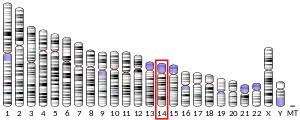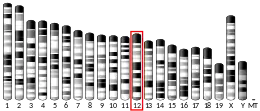| KCNK10 | |||||||||||||||||||||||||||||||||||||||||||||||||||
|---|---|---|---|---|---|---|---|---|---|---|---|---|---|---|---|---|---|---|---|---|---|---|---|---|---|---|---|---|---|---|---|---|---|---|---|---|---|---|---|---|---|---|---|---|---|---|---|---|---|---|---|
| |||||||||||||||||||||||||||||||||||||||||||||||||||
| Identifiers | |||||||||||||||||||||||||||||||||||||||||||||||||||
| Aliases | KCNK10, K2p10.1, PPP1R97, TREK-2, TREK2, potassium two pore domain channel subfamily K member 10 | ||||||||||||||||||||||||||||||||||||||||||||||||||
| External IDs | OMIM: 605873 MGI: 1919508 HomoloGene: 11321 GeneCards: KCNK10 | ||||||||||||||||||||||||||||||||||||||||||||||||||
| |||||||||||||||||||||||||||||||||||||||||||||||||||
| |||||||||||||||||||||||||||||||||||||||||||||||||||
| |||||||||||||||||||||||||||||||||||||||||||||||||||
| |||||||||||||||||||||||||||||||||||||||||||||||||||
| |||||||||||||||||||||||||||||||||||||||||||||||||||
| Wikidata | |||||||||||||||||||||||||||||||||||||||||||||||||||
| |||||||||||||||||||||||||||||||||||||||||||||||||||
Potassium channel, subfamily K, member 10, also known as KCNK10 is a human gene. The protein encoded by this gene, K2P10.1, is a potassium channel containing two pore-forming P domains.[5][6][7]
See also
References
- 1 2 3 GRCh38: Ensembl release 89: ENSG00000100433 - Ensembl, May 2017
- 1 2 3 GRCm38: Ensembl release 89: ENSMUSG00000033854 - Ensembl, May 2017
- ↑ "Human PubMed Reference:". National Center for Biotechnology Information, U.S. National Library of Medicine.
- ↑ "Mouse PubMed Reference:". National Center for Biotechnology Information, U.S. National Library of Medicine.
- ↑ Lesage F, Terrenoire C, Romey G, Lazdunski M (September 2000). "Human TREK2, a 2P domain mechano-sensitive K+ channel with multiple regulations by polyunsaturated fatty acids, lysophospholipids, and Gs, Gi, and Gq protein-coupled receptors". The Journal of Biological Chemistry. 275 (37): 28398–405. doi:10.1074/jbc.M002822200. PMID 10880510.
- ↑ Goldstein SA, Bayliss DA, Kim D, Lesage F, Plant LD, Rajan S (December 2005). "International Union of Pharmacology. LV. Nomenclature and molecular relationships of two-P potassium channels". Pharmacological Reviews. 57 (4): 527–40. doi:10.1124/pr.57.4.12. PMID 16382106. S2CID 7356601.
- ↑ Dong YY, Pike AC, Mackenzie A, McClenaghan C, Aryal P, Dong L, Quigley A, Grieben M, Goubin S, Mukhopadhyay S, Ruda GF, Clausen MV, Cao L, Brennan PE, Burgess-Brown NA, Sansom MS, Tucker SJ, Carpenter EP (March 2015). "K2P channel gating mechanisms revealed by structures of TREK-2 and a complex with Prozac". Science. 347 (6227): 1256–9. doi:10.1126/science.1261512. PMC 6034649. PMID 25766236.
Further reading
- Gu W, Schlichthörl G, Hirsch JR, Engels H, Karschin C, Karschin A, Derst C, Steinlein OK, Daut J (March 2002). "Expression pattern and functional characteristics of two novel splice variants of the two-pore-domain potassium channel TREK-2". The Journal of Physiology. 539 (Pt 3): 657–68. doi:10.1113/jphysiol.2001.013432. PMC 2290188. PMID 11897838.
- Goldstein SA, Bockenhauer D, O'Kelly I, Zilberberg N (March 2001). "Potassium leak channels and the KCNK family of two-P-domain subunits". Nature Reviews. Neuroscience. 2 (3): 175–84. doi:10.1038/35058574. PMID 11256078. S2CID 9682396.
- Gierten J, Ficker E, Bloehs R, Schlömer K, Kathöfer S, Scholz E, Zitron E, Kiesecker C, Bauer A, Becker R, Katus HA, Karle CA, Thomas D (August 2008). "Regulation of two-pore-domain (K2P) potassium leak channels by the tyrosine kinase inhibitor genistein". British Journal of Pharmacology. 154 (8): 1680–90. doi:10.1038/bjp.2008.213. PMC 2518462. PMID 18516069.
- Yu W, Andersson B, Worley KC, Muzny DM, Ding Y, Liu W, Ricafrente JY, Wentland MA, Lennon G, Gibbs RA (April 1997). "Large-scale concatenation cDNA sequencing". Genome Research. 7 (4): 353–8. doi:10.1101/gr.7.4.353. PMC 139146. PMID 9110174.
- Andersson B, Wentland MA, Ricafrente JY, Liu W, Gibbs RA (April 1996). "A "double adaptor" method for improved shotgun library construction". Analytical Biochemistry. 236 (1): 107–13. doi:10.1006/abio.1996.0138. PMID 8619474.
- Bang H, Kim Y, Kim D (June 2000). "TREK-2, a new member of the mechanosensitive tandem-pore K+ channel family". The Journal of Biological Chemistry. 275 (23): 17412–9. doi:10.1074/jbc.M000445200. PMID 10747911.
External links
- KCNK10+protein,+human at the U.S. National Library of Medicine Medical Subject Headings (MeSH)
This article is issued from Wikipedia. The text is licensed under Creative Commons - Attribution - Sharealike. Additional terms may apply for the media files.



